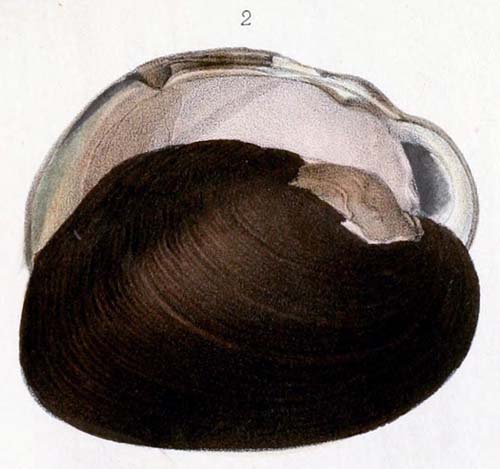| Page last updated
Sun 07 Sep 2025 |
The Freshwater Mussels (Unionoida) of the World (and other less consequential bivalves)
FM(U)otW(aolcb) is the web version of the MUSSEL Project Database. Follow the links to browse the data or use the custom Google search field. Either way, you win!
The nominal species (available and otherwise) in this synonymy are listed by usage rather than strictly by publication date. The primary sorting order is by the most recent year (since 1969) that the species name was treated as valid, and then nominal species are sorted secondarily by publication year. The taxonomic history of the valid species (since 1900) is listed at the bottom of the page. The MUSSEL Project Database has moved to a new server, with a new URL! The new address for this page is: https://musselpdb.org/db.php?ty=validsp_syn&id=1116
Search the database pages:
|
|
Unionoidea | Unionidae | Gonideinae | Pseudodontini | Pseudodontina | Sundadontina species Sundadontina harmandi (Crosse & Fischer, 1876): nominal species
35 specimens available.
Pseudodon harmandi Crosse & Fischer, 1876
 
Crosse & Fischer, 1876, J. de Conch. 24: 331, pl. 10, fig. 2.
Type(s): HOLOTYPE MNHN_IM-2000-1717, Cambodge.
Pseudodon harmandi — Crosse & Fischer (1876), Morlet (1889), Fischer (1891)
Pseudodon (s.s.) harmandi — Simpson (1900), Simpson (1914)
Pseudodon (s.s.) callifer — Haas (1924), Haas (1969)
Pseudodon inoscularis harmandi — Brandt (1974), Sri-aroon et al. (2007)
Sundadontina harmandi — Bolotov et al. (2020), Graf & Cummings (2021), Bolotov et al. (2023), Jeratthitikul et al. (2024), Jeratthitikul et al. (2025), Konopleva et al. (2025)
|
Pseudodon cumingii Morlet, 1889
Morlet, 1889, J. de Conch. 37: 165.
(misidentified reference to Anodonta cumingii Lea, 1851)
Pseudodon cumingii — Morlet (1889)
Pseudodon inoscularis harmandi — Brandt (1974)
|
|
Page updated: 08:29:53 Sun 07 Sep 2025 |
|